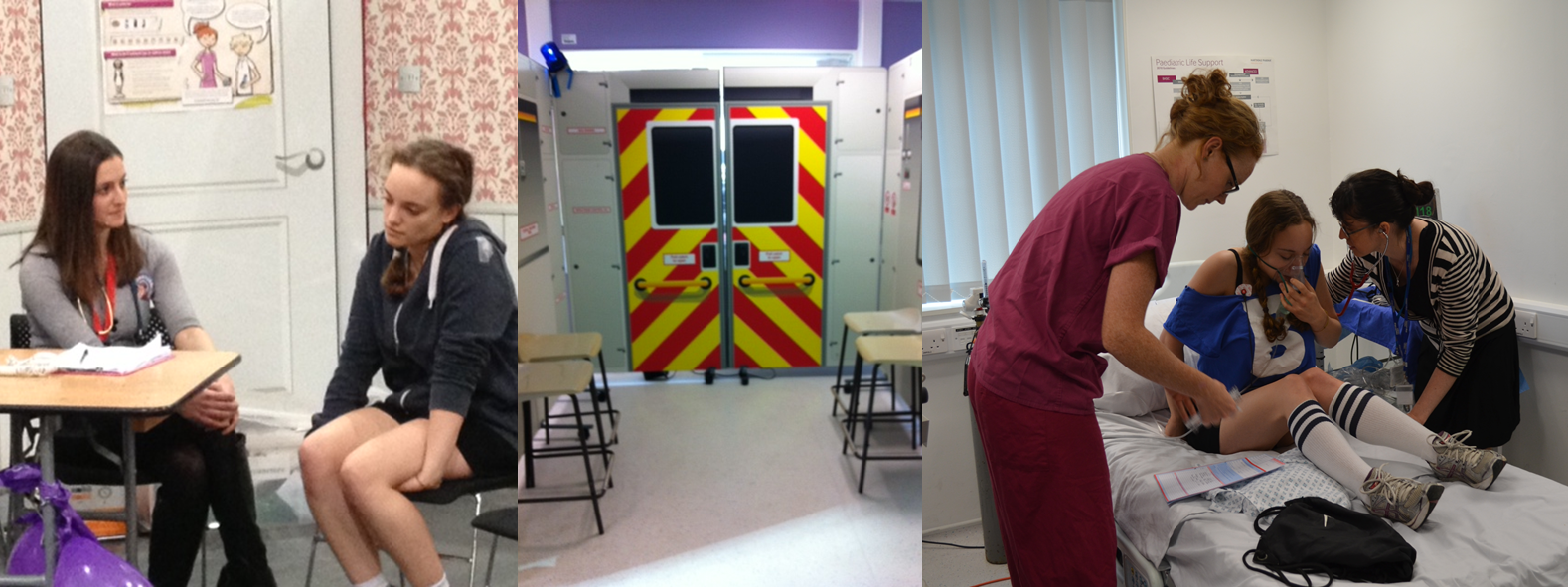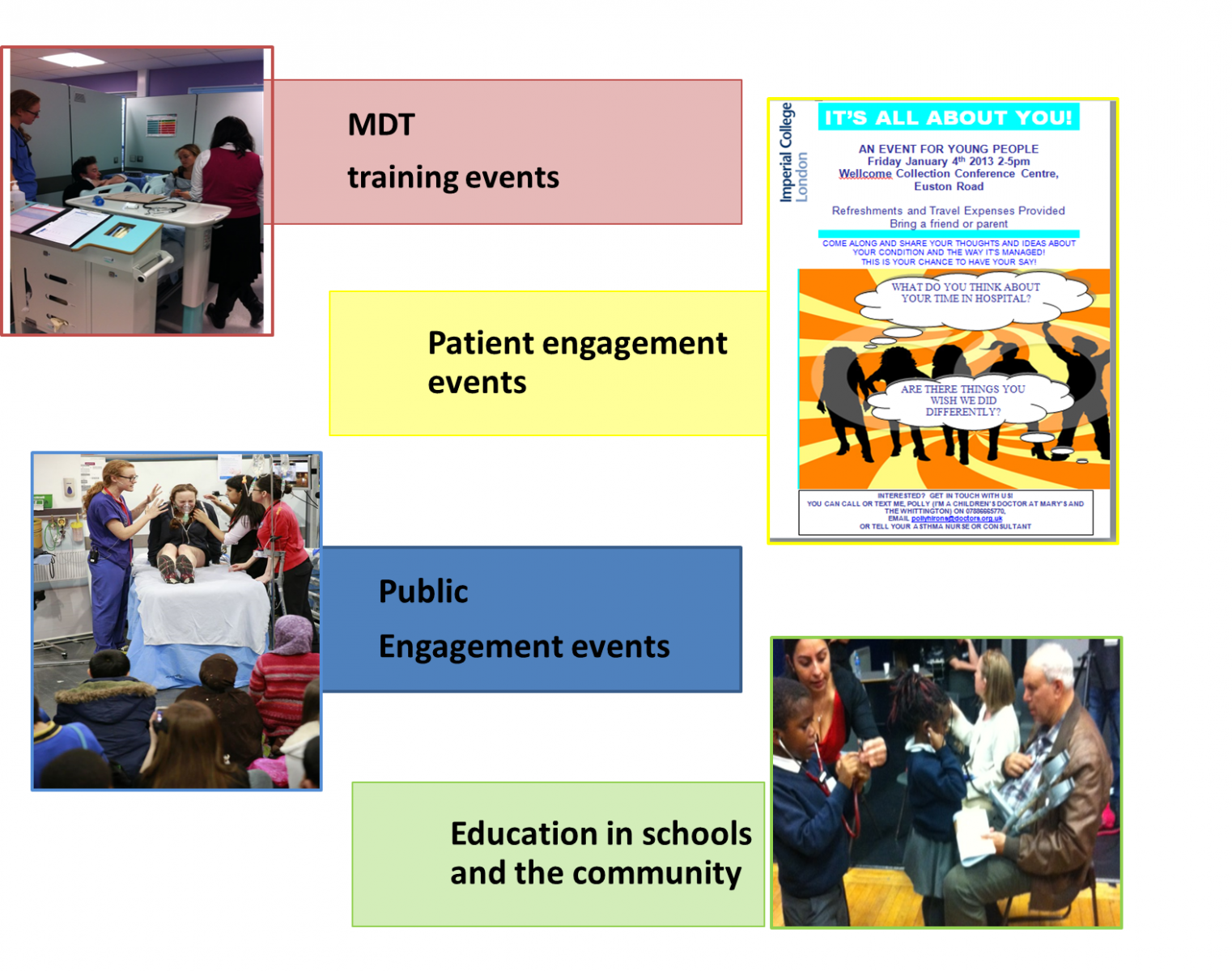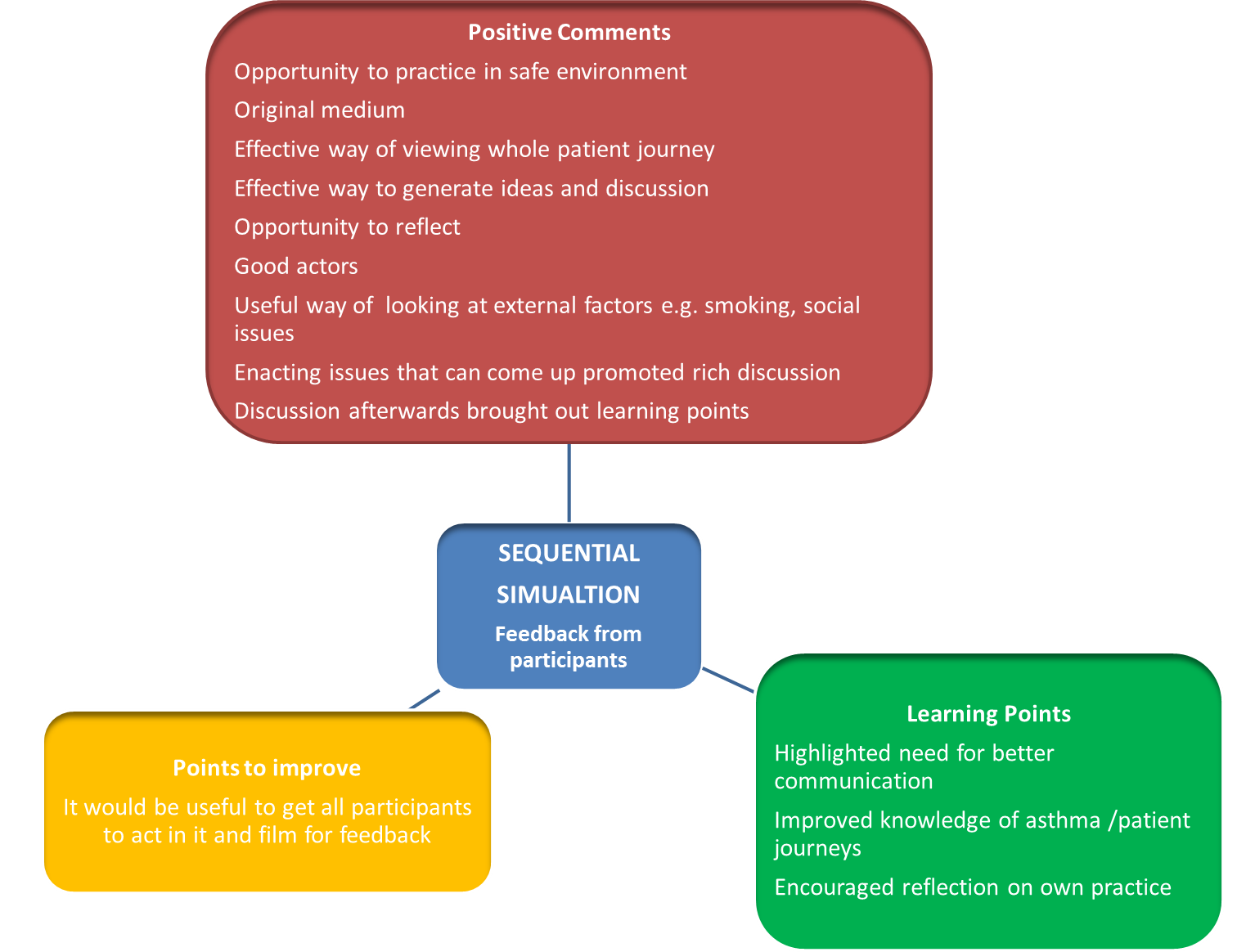
|
Authors | Institution |
|
Polly Hirons Sara Hamilton Zinah Sorefan Elisabeth Paice Roger Kneebone Fernando Bello |
Imperial College London Imperial College Health Care NHS Trust |
 |
|
||||||
| Sequential Simulation: An innovative approach to exploring the patient journey |
In the last few years there has been cry for better Integrated Care within the NHS and our team at Imperial College London set about creating an appropriate teaching tool to address this need and allow teams, professionals and patients to learn and develop together.
‘Individual brilliance is not enough. Patients want their care to be co-ordinated.’
National Voices UK 2012
Sequential Simulation (SqS) allows the representation of key events in a patient’s journey. Too often we, as medical professionals, concentrate only on our own short interactions with the patient, without much thought into how it may impact further down the line. The SqS puts these interactions into context and allows us to reflect on their importance and how they could be optimised. The process highlights key ‘crunch points’ in the journey – most commonly hand-over or transition points where communication between teams is paramount.

The team at Imperial College London has been using SqS as a tool for encouraging Integrated Care and communication between professionals, teams, patients and the public. Projects have ranged from focusing on stroke, myocardial infarction and elderly care pathways and most recently on the journey of an adolescent having an asthma attack. We use a range of different simulated settings; for example, A+E, a GP surgery, a hospital ward, in addition to technical equipment and audio to provide a realistic physical context. Patients and family members are played by trained actors.
The simulations have been used in a variety of ways to engage and educate different audiences and encourage participants to step into the shoes of those in the simulation.

Multidisciplinary professionals are invited to take part to practice and develop their communication and team-working skills. Simulations are also performed for patient groups to stimulate discussion and ideas. Finally, the simulations have been adapted for public-engagement purposes to educate and build bridges between health professionals and the public; for example, the asthma simulation was performed at a school for pupils, teachers, school nurses and local health professionals as part of an asthma workshop. Firmly ensconced in each event is the need for collaboration with patients and the public and indeed the projects have each been designed with input from patient groups.
The simulation work involving young people is also part of a wider project to work in collaboration with young people and their families to improve the care of those with long-term conditions. Closely related is the exciting project 'The Talk Lab' which looks at improving communication between health professionals and young people. You can find out more by clicking on the 'more details' tab.
Each SqS event has been met with a wealth of positive feedback from professionals, patients and the public. Professionals felt that it was an original and exciting medium through which to explore communication and team-work and to stimulate learning and reflection on their professional behaviours.

‘It was very dramatic, my heart was racing, and this is not the first time I’ve seen a simulation by any means, but looking around the room it was very interesting to see how all the physicians particularly were looking quite worried.’ Consultant Surgeon
‘But this will completely change every time I speak to a child… How I approach a child, my start will be different, my structure will be different. And I’ve never done that before and never in 3 hours do you get something that changes what you do every day’. Junior doctor
‘So I think… because… you know people are watching, you are seeing yourself talking about someone, across someone, over them. And in real life in a hospital, it’s easy to gloss over that that’s not the way to do it, and this really… makes you aware that you’re not doing the right thing every day…’ Junior doctor
The performances encouraged rich discussion amongst patient groups about their own journeys and experiences and feelings about optimal care. The feedback received from these patient-engagement events was then used to design further projects and fed back to professionals at SqS -centred training days such as ‘Communicating with Adolescents’. They provoked similar excitement at public engagement events where audiences found the simulations stimualting and educational.
‘It just teaches you how to deal with the situations. It gives you an idea of what job you can do when you’re older and how to work with the different medical situations.’
Interview with female Year 9 student
‘And I thought it was really interesting from a lay person’s point of view to see what’s going on for the physicians, because I’ve been in that position in resus when my wife was very ill and thinking, you know, what are these doctors doing, and I just felt it was really useful to see it from their perspective and what they’re going through’. Member of public.
SqS is an innovative and exciting way of engaging and educating diverse audiences about Integrated Care. It is versatile and transportable and is received well by participants. SqS is a valuable learning tool, though further work is needed to establish its role within medical education.
Sqs is an innovative multidisciplinary teaching tool that can be used in a variety of ways to allow participants to reflect on patient journeys in a more holistic way and encourage more Integrated Care.
‘No matter how small your part is, you’re part of the jigsaw…’
Junior doctor reflecting on the asthma simulation
With thanks to Dr Dilip Bassi and Matt Gold who work in our team at Imperial and also to all those who gave up their time to help with our events including Dr Georgina Corbet-Burcher, Dr Liz Powell, Dr Sandheea Ramdeny, Dr Geraint Warlow, Dr Anna Mirelman, Chris Arnall, Ryan Powell, Norma Jones and Ella Jones.
The Kennedy Report:
‘Getting it right for children and young people: Overcoming cultural barriers in the NHS so as to meet their needs. A review by Professor Sir Ian Kennedy September 2010’. Can be downloaded from: https://www.gov.uk/government/publications/getting-it-right-for-children-and-young-people-overcoming-cultural-barriers-in-the-nhs-so-as-to-meet-their-needs
An introduction to our simulation set and its uses:
Kneebone, R, ‘Simulation, Safety and Surgery’. Qual Saf Health Care 2010;19:i47-i52
 Send Email
Send Email